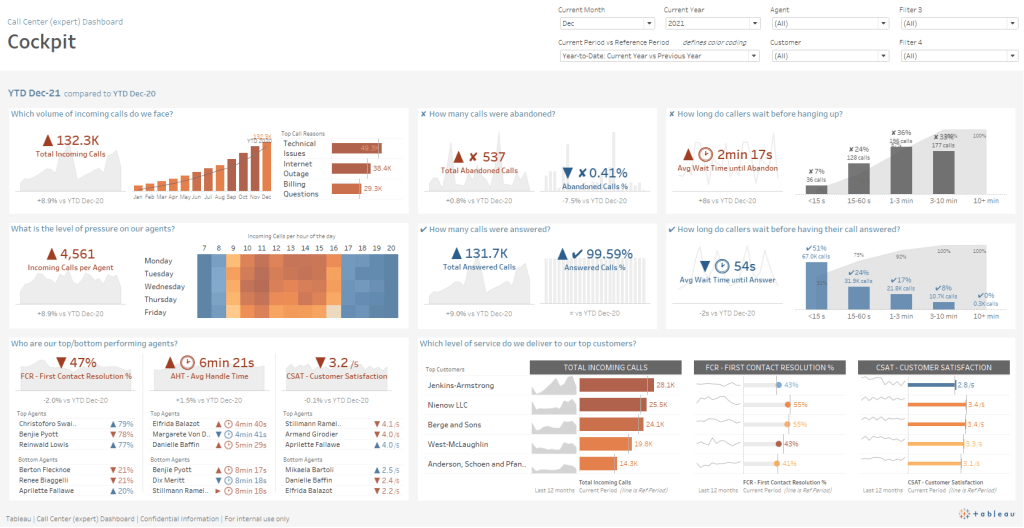Salesforce Announces New AI-powered Tableau Capabilities for Slack
Salesforce’s New Tableau Capabilities Improve the Flow of Work with Slack Integration, AI-powered Features
World’s leading AI-powered CRM software maker Salesforce has announced new Tableau capabilities for Slack enhancements. These enhancements use natural language processing to drive user-centric experiences and improve decision-making using Tableau. The newly enhanced features also improve how employees and associates communicate about their Tableau workflows using Slack.
According to Salesforce, the new Tableau features would unlock powerful insights that drive personalized user experiences, automate workflows, and lead to better decision-making with accurate data-driven insights. Currently, a majority of the service organizations either use or are planning to use Artificial Intelligence to improve their business operations. With customer service at the heart of every conversation, it is essential to rely on power-packed features like Salesforce’s Tableau capabilities. These capabilities are tailor-made to help customers make data-driven decisions more quickly and efficiently. With the new release, companies can put their data at the center of every business interaction, use natural language to add business context to dashboards, personalize access based on their security policies, and more.

Salesforce’s Tableau is a leading business intelligence platform, preferred by top-ranking global organizations. 80% of the business leaders attribute their success in decision-making to data analytics and its reporting. Despite knowing the power and value of data intelligence in decision-making, 41% of the business leaders either find it extremely hard to extract insights from the available data, or worse, are totally back-tracked by its inaccessibility in real time scenarios. With Tableau’s newly announced capabilities, business leaders would be able to overcome these challenges, and with AI, they can even empower their managers and analysts make the most out of available data.
Tableau for Slack enhancements would bring data at the core of every business conversation, turning your analysts into decision-makers in critical operations where little or no managerial supervision is required.

Data Mapping: Customized and pre-defined dashboards for BI teams to work directly on multiple use cases across industries listed in the Tableau Exchange.
Data Mapping allows users to templatize their workflows and hit the ground running with Accelerator’s ready-to-use dashboards. Salesforce users can reconfigure their dashboards to match any data source without the use of third-party applications, saving time and automating manual data entry.
Data Stories:
Business leaders can now break down every part of their Tableau reports using Data Stories, a unique natural language-generated explanation to every data sheet you ever came across. It allows analysts to understand complex data sets and create intuitive fields for faster interactions. This narrative format would help domain experts make critical decisions more confidently.

User Attribute Functions: Witness the new AI-powered embedded analytics in Tableau Cloud. This capability is purpose-driven for personalization and self-service displays for heavily enriched data sets and insights. Users can now set new policies and compliance procedures to lock certain attributes within Tableau capabilities based on individual role, department, and current location.
At the time of this announcement, Francois Ajenstat, Chief Product Officer at Tableau shared an email statement with AiThority.com news desk. Francois said, “Business leaders understand that data and analytics are critical to their organizations’ success, but many don’t fully understand how to use it to make decisions. There is a huge opportunity for businesses to better integrate data into everything they’re doing. We are committed to continuously delivering capabilities inspired directly by the Tableau Community, and with these new innovations businesses are able to make data-driven decisions that will drive continued growth and efficiency.”
See Salesforce in action here: https://play.vidyard.com/6gyruBboMaN1GpfzuQcFK1
Conclusion
The latest announcement comes within days of Salesforce’s newly introduced Einstein GPT launch. As the race to conquer lost grounds in the Cloud business heats up, we should expect to see more organizations embedding AI in their core offerings. With Tableau, Slack and Salesforce, we have a ready-made benchmark on how big data, business analytics and machine learning capabilities could shape the future of enterprise planning and workplace collaboration.


Comments are closed.